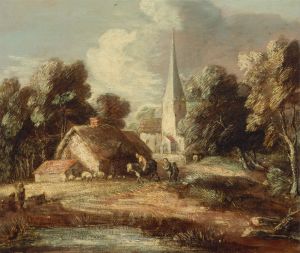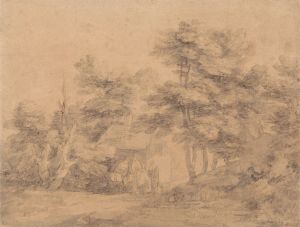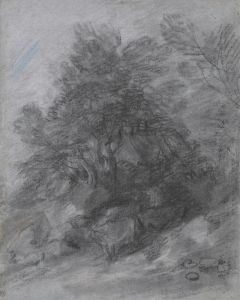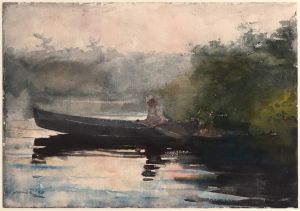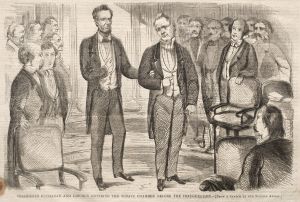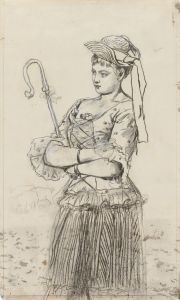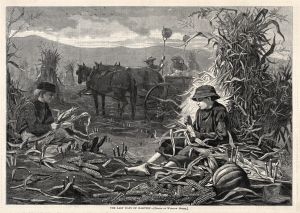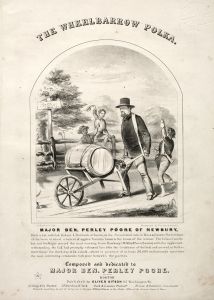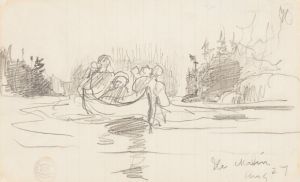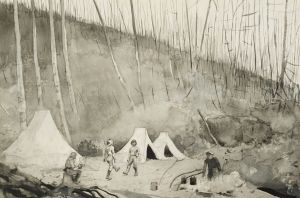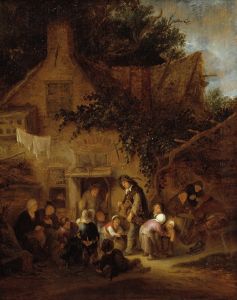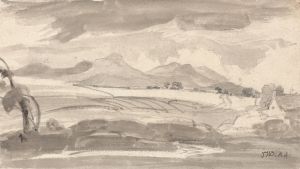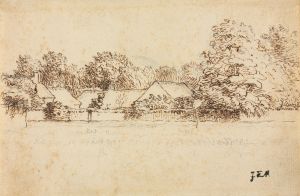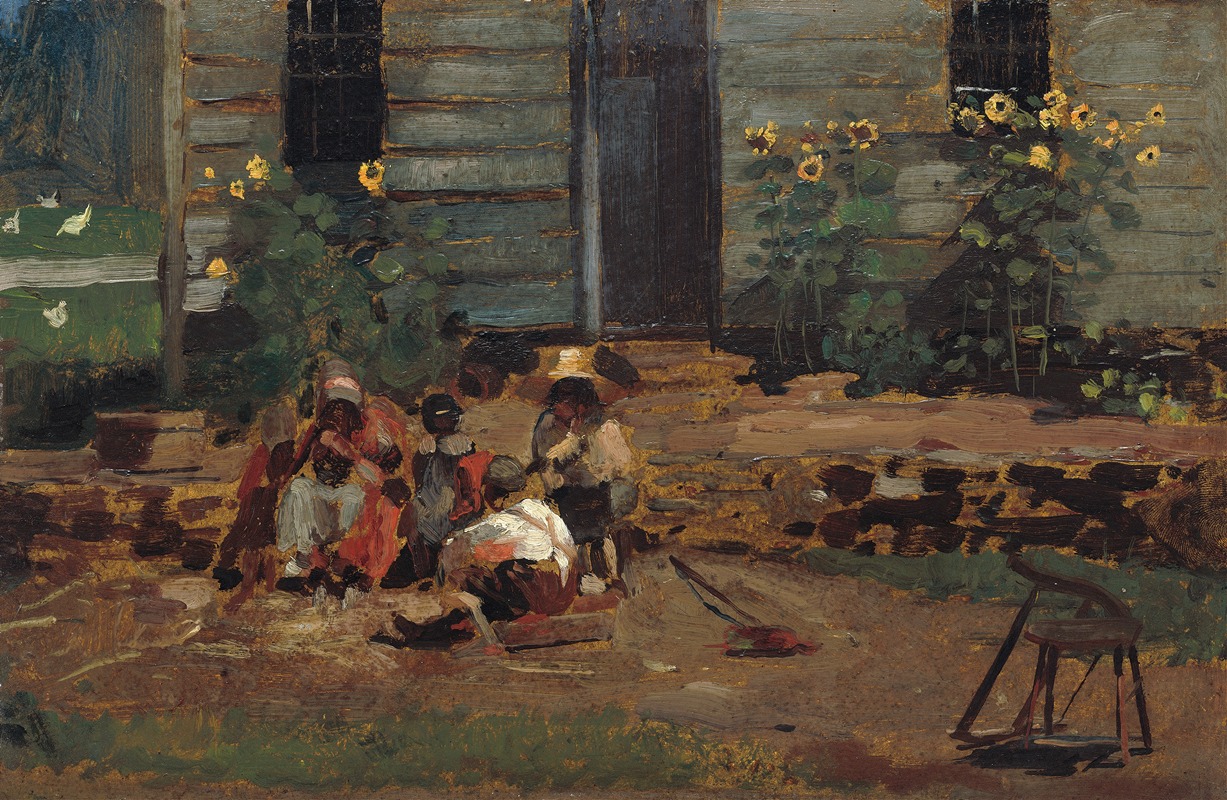
Sketch of a Cottage Yard
A hand-painted replica of Winslow Homer’s masterpiece Sketch of a Cottage Yard, meticulously crafted by professional artists to capture the true essence of the original. Each piece is created with museum-quality canvas and rare mineral pigments, carefully painted by experienced artists with delicate brushstrokes and rich, layered colors to perfectly recreate the texture of the original artwork. Unlike machine-printed reproductions, this hand-painted version brings the painting to life, infused with the artist’s emotions and skill in every stroke. Whether for personal collection or home decoration, it instantly elevates the artistic atmosphere of any space.
"Sketch of a Cottage Yard" is a watercolor painting created by the American artist Winslow Homer in 1874. Homer, born in 1836, is renowned for his landscape paintings and depictions of American life, particularly those that capture the essence of rural and coastal scenes. This particular work is a testament to his skill in watercolor, a medium he increasingly favored during the 1870s.
The painting measures approximately 9 x 12 inches and is executed on paper. It portrays a quaint, rustic scene of a cottage yard, likely inspired by the rural settings that Homer encountered during his travels. The composition features a simple, yet charming yard with a wooden fence, a few trees, and a glimpse of the cottage itself. The use of light and shadow in the painting highlights Homer's keen observational skills and his ability to convey the tranquil atmosphere of the countryside.
Homer's technique in "Sketch of a Cottage Yard" is characterized by loose, fluid brushstrokes that capture the spontaneity of the scene. The watercolor medium allows for a delicate interplay of colors, with soft greens and browns dominating the palette. This approach not only brings a sense of immediacy to the work but also reflects Homer's mastery of watercolor, a medium that requires precision and control.
During the early 1870s, Homer spent considerable time in Gloucester, Massachusetts, and other rural areas, where he found inspiration in the simplicity and beauty of everyday life. "Sketch of a Cottage Yard" is likely a product of these experiences, embodying the artist's fascination with the American landscape and his desire to depict it with authenticity and affection.
Homer's work during this period marked a significant shift from his earlier career as an illustrator and oil painter. His watercolors from the 1870s are celebrated for their freshness and vitality, qualities that are evident in "Sketch of a Cottage Yard." This painting, like many of his watercolors, was created en plein air, a practice that allowed Homer to capture the natural light and atmosphere of his subjects directly.
"Sketch of a Cottage Yard" is part of the collection at the Metropolitan Museum of Art in New York City. The museum acquired the painting in 1911, and it has since been an important piece in their American art collection. The work is appreciated not only for its aesthetic qualities but also for its representation of Homer's transition to watercolor and his exploration of rural American themes.
Winslow Homer continued to develop his watercolor technique throughout his career, producing some of his most iconic works in this medium. "Sketch of a Cottage Yard" stands as an early example of his proficiency and serves as a window into the artist's evolving style and interests during the 1870s.





